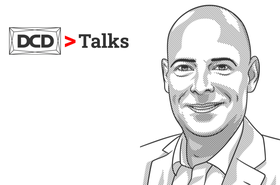The fleets of always-on and power-hungry servers within a data center produce a lot of heat. And with AI and other power-hungry hardware, these fleets will continue to grow and grow rapidly.
Data center operators are constantly working to get rid of the heat to ensure equipment doesn't overheat, but some operators are also reusing their heat, instead of throwing it away.
Just dispelling the heat from data centers is bad for the circular economy and contributes to climate change. With heat reuse the data center can make use of the excess heat in clever, sustainable ways. Some organizations are reusing the heat generated by their data centers to district heating networks, other facilities, and even fish farms and green houses.
Therefore, as part of a sustainability strategy, operators should be exploring ways to put the heat the heat produced by their hardware to work and consider using data centers with heat reuse capabilities.
Benefits of reusing data center heat
A significant amount of the energy data centers use is to cool down and maintain temperatures. With data centers facing pressure from governments and organizations, like the EU with the Energy Efficiency Directive, to decarbonize and lower energy consumption to protect the planet, reusing data center heat is one great way of doing it.
From an environmental standpoint, reusing waste heat, such as using the heat to warm nearby buildings, can help reduce energy use from other sources, like a nearby district heating system that uses a gas boiler or even worse, coal or oil.
In addition, governments may now require new data centers to conduct feasibility studies for using excess heat to benefit local communities in order to obtain building permits and power agreements – a requirement being introduced in many locations across Europe.
It is important for organizations to get ahead of these requirements sooner rather than later since it may also come with tax incentives and may help avoid penalties, fines and time spent navigating local and international legislation.
Low heat or high heat solutions
In general, there are two ways of doing heat reuse. Either you just turn back the low heat 30–35-degree Celsius water to the heating system, or you add heat pumps that warm up the water to typically 70-80-degree Celsius and then push it back to the heating system.
What type of solution you chose to work with usually depends on the taker of the heated water, either they want low heat or high heat. In high heat solutions you can also get money back from the taker for heating the water up, which could make the solution economically viable on top of the sustainability aspects.
Examples of innovative ways to reuse data center heat
Instead of ventilating hot air back into the atmosphere, forward leaning data centers are exploring creative ways to reuse heat. Below some ways this could be done:
Heating buildings and homes in the community: Organizations often build data centers near energy grids that power nearby cities. Those cities also have heating requirements and district heating systems. Organizations could use the heat from data centers to heat up and route water into district heating systems and into homes and buildings with radiators.
Using heat for agricultural purposes: Greenhouses require consistent heating year-round and using similar solutions as the district heating system, data centers could be that source of heat. This would be a good alternative to geothermal energy and bio fermentation, as it has a minimal impact on soil and the environment.
Heating water for fish farms and swimming pools: Many public swimming pools rely on less sustainable energy sources to keep the water warm, and heat from data center equipment could warm both swimming pools and other pools, like those used to incubate fish and grow vegetation.
Manufacturing wood pellets: Wood pellets are a low-carbon alternative to coal. These pellets are burned for heat, but to achieve the optimal level of quality, they need to be dried with hot air first to reduce their moisture content. Data center heat could be rerouted to provide this hot air.
Challenges to data center heat reuse
Reusing heat in the data center isn't rocket science but not as easy as flipping a switch. Some of the primary hurdles to heat reuse are as follows:
Infrastructure startup costs: Many heat reuse projects operate on a huge scale, and setting up this infrastructure requires capital investment. While some of this investment could come from government entities or through tax credits, that likely won't cover all the upfront expenses.
The cost of heat reuse will likely come down and the business model develop over time as this becomes a focus area for the data center industry, and the long-term benefits should hopefully offset the upfront investment.
Lost in transmission: Data centers already use a broad set of tools to monitor airflow, cooling, humidity, and temperature. They need even more visibility into how much heat is being transferred from one place to another.
During this process, both heat and energy can be lost. This requires paying close attention to energy usage effectiveness to optimize heat cycling, liquid cooling and airflow dynamics. This can ensure both sides of the heat equation are balanced. The data center environment is safe for all hardware and infrastructure, and the reused heat is effective wherever it is redirected.
Location matters: A data center's location may limit its ability to deploy some of these creative options. For example, if the data center is too far away from users to benefit from the waste heat or if there aren't enough users to consume all the heat being recycled, it simply may not be viable.
As a result, it's vital to take heat reuse into consideration when doing site selection for new data centers and colocation sites as this could have a great impact on your company’s sustainability strategy, targets, and outcome.
Conclusion
As data center demand continues to rise, reusing heat could be one way to build more efficient and more sustainable infrastructure making the data center a contributor to society and not just a place that consumes a lot of energy. Heat reuse should definitely be one of your top priorities when choosing your location and partner for your data center capacity.
Stockholm has approximately 4,000 kilometers of district heating network, all our facilities are connected, and we reuse as much as 90 percent of the energy put into a computer room. Welcome to Sweden, welcome to Stockholm!
More from Conapto
-

DCD>Talks Greening New Capacity with Stefan Nilsson, Conapto
Tune into this DCD>Talk from our Silicon Valley event, where we discuss Conapto's drive to green all new colocation capacity utilizing 24/7 renewable energy matching, with Stefan Nilsson, Conapto
-

Sponsored Sale leaseback: A great way to a greener data center industry
Sale leaseback could help speed up the dismantling of expensive and environmentally damaging data centers, saving owners and operators a fortune in the process. But how does it work?
-

What the Nordics are getting right about sustainability
Conapto’s Stefan Nilsson on sustainability reporting and the perks of being in the Nordics

